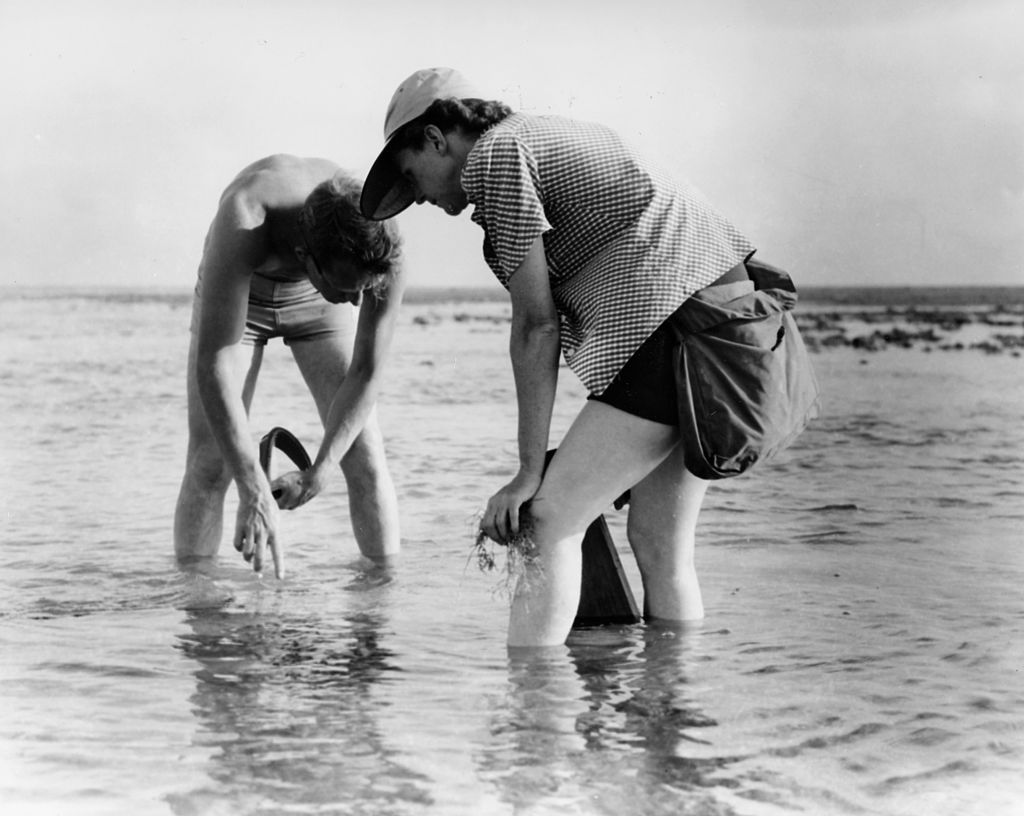Rachel Carson and ‘Silent Spring’
She Taught Us How to See Life — and Save Our Own

I was on vacation walking down a wooded road in the Pocono Mountains in Pennsylvania on July 20, 2019, the 50th anniversary of the first moon walk in 1969. I was remembering Neil Armstrong on TV descending the ladder of the lunar landing module when I was 13.
My thoughts shifted when I picked up a rock on the side of the road which held a fossil of a brachiopod sea shell. I was standing approximately 1,700 feet above sea level, over 100 miles away from the Atlantic Ocean. The fossil reminded me that at various times in Earth’s history, most of North America was submerged under ocean water.
I had read this in a book I received for my 13th birthday in 1969: The Sea Around Us, published in 1950 by Rachel Carson. The book made me ponder our planet and humanity — much like the moon walk.
The Sea Around Us provides a geophysical history of the Earth and describes the development of life upon it, picking up where Darwin left off in linking life to its physical environment. It’s rigorously researched and incorporates numerous studies and scientific sources. It’s also enthralling literature, crafted with eloquent prose.
Millions of people have been moved by the picture taken of the “Earthrise” over the lunar horizon by Michael Collins, who piloted the Apollo 11 command module while Neil Armstrong and Buzz Aldrin walked on the moon. Using data and analysis, Carson similarly viewed the Earth from her desk as a blue biosphere, the whole of which she determined was far greater than the sum of its parts. With no less wonderment than ancient peoples who created myths to explain weather phenomena, land forms, and celestial bodies, Carson comprehended the pervasive interconnection of life with atmosphere, terrain, sea, and lunar and solar positioning.
Interestingly, few people I meet have ever heard of The Sea Around Us. Many, however, are aware of a later book Rachel Carson published in 1962: Silent Spring. It too dealt with the connectedness of life and its physical surrounding.
Silent Spring exposed the danger of the unregulated use of DDT (dichlorodiphenyltrichloroethane) and other pesticides. Carson’s research showed how overuse of DDT hurt farming in the long run. Insects adapted to the chemical and became even more impervious pests, while DDT harmed livestock, birds, and fish, and evidence was mounting on its toxicity for humans.
More alarming, DDT eventually worked its way into the broader environment. And it was just one of a growing number of synthetic chemicals contaminating the environment.
Not surprisingly, Silent Spring met with strong opposition. Carson faced an onslaught of negative propaganda and threats of lawsuits by the chemical industry. Even Time Magazine initially dismissed Carson’s findings, calling them overly emotional (an implied shot at her gender).
But Carson was resolute and unflappable, as she demonstrated in her testimony before a Congressional committee. Her remarkable courage arose from her confidence in the objective truth, unhampered by ideology or need for self-acclaim.
It was President John F. Kennedy who in 1961 challenged Americans in a speech before Congress, with “landing a man on the moon and returning him safely to the Earth” before the end of the decade. The following year, on August 29 in a press conference, President Kennedy brought Rachel Carson’s Silent Spring to the attention of the American people. (https://www.jfklibrary.org/asset-viewer/archives/JFKWHA/1962/JFKWHA-124/JFKWHA-124 at 26:47 – 27:11.)
Carson’s findings in Silent Spring were later validated by President Kennedy’s Science Advisory Committee. The book became a best seller and unleashed wide concern for the environment.
President Kennedy was assassinated two years after his moon-shot speech, and never saw his vision realized at the end of the decade. Similarly, Rachel Carson died two years after the publication of Silent Spring (from breast cancer), and never saw the environmental movement she inspired come to fruition, including the establishment of the Environmental Protection Agency in 1970.
Carson updated The Sea Around Us in a 1961 edition. Her preface commented on the consequences of dumping low level nuclear waste into the ocean, which was the practice at the time:
“It is a curious situation that the sea, from which life first arose, should now be threatened by the activities of one form of that life. But the sea, though changed in a sinister way, will continue to exist; the threat is rather to life itself.”
Men looking back from the surface of the moon to Earth marked 1969 as one of the greatest years in human progress. But on Earth, the year brought tragedy to the California coast that reasserted Carson’s warning to humanity.
In late January of 1969, oil gushed from a platform in the Santa Barbara Channel onto beaches stretching from Goleta to Ventura. The spill, the largest ever in U.S. waters at the time, impacted life on shores from Pismo Beach to San Diego.
Rachel Carson’s prescription for environmental activism especially suits our contemporary society which faces a looming deadline for slowing pollution-accelerated climate change. If there was ever a time when we needed a factually grounded, non-ideological, and courageous response to this global challenge, it is now!



